ThermoPlastic Elastomer
Thermoplastic elastomers (TPE) are a unique combination of properties of both plastics and rubber. These materials have both the flexibility and elasticity of rubber and the thermal processability of plastics. This unique combination has made TPEs one of the most popular materials in various industries.
TPE are typically composed of two or more polymers linked together in a block or branched structure. This structure allows them to have both elastomeric and thermoplastic properties.
Applications of TPEs
TPEs are used in a variety of industries due to their unique properties, including:
Automotive industry: Interior parts of cars such as gear levers, seat covers, and under-hood parts.
Medical industry: Medical gloves, medical tubing, and other medical equipment.
Sports industry: Athletic shoes, balls, and other sports equipment.
Packaging: Flexible packaging, airbags, and protective packaging.
Home use: Home appliances, toys, and other consumer products.
Electronic industry: Protective coverings for cables and electronic components.
ThermoPlastic Elastomer
| Products | Grade | Elongation at break | Density (g/mm3) | Tensile strength | Applications | Data Sheet | MSDS |
|---|---|---|---|---|---|---|---|
| ThermoPlastic Elastomer | 200 – 375% | 1.15 – 1.25 g/cm³ | 10 – 45 MPa | ||||
| ThermoPlastic Elastomer |
| Applications | , , , |
|---|
You must be logged in to post a review.
Related products
Blow Molding (BLOW)
Types of blow moldingContinuous Extrusion Blow Molding (EBM) Process:
- Molten plastic is continuously extruded in a tube-like form (parison).
- A mold clamps around the parison and inflates it with air.
- The part cools and solidifies before being ejected.
- Reciprocating Screw System: The screw moves back and forth to accumulate plastic before pushing it into the mold.
- Accumulator Head System: Plastic is stored in an accumulator before being discharged in a single shot.
- Plastic is first injection molded into a preform (small tube-like shape with a finished neck).
- The preform is then transferred to a blow mold and inflated.
- The final shape is formed, cooled, and ejected.
- Similar to IBM, but includes a stretching step before inflation to improve strength and clarity.
- The preform is reheated, stretched lengthwise, and then blown into shape.
- A parison is extruded and clamped in a mold.
- The parison is stretched both axially (lengthwise) and radially (outward) before being inflated.
Advantages of blow molding
- Cost-Effective Production
- High Efficiency & Fast Production
- Ability to Produce Complex Shapes
- Lightweight and Durable Products
- Versatile Material Usage
- Suitable for Large & Small Products
Disadvantages of blow molding
- Limited to Hollow Shapes
- High Initial Equipment & Mold Costs
- Inconsistent Wall Thickness
- Weak Seams & Stress Points
- Less Precision Compared to Injection Molding
- High Energy Consumption
Applications of blow molding
- packaging Industry: Bottles for beverages, cosmetics, pharmaceuticals, and household products.
- Automotive Industry: Fuel tanks, air ducts, washer fluid reservoirs, and coolant tanks.
- Industrial & Chemical Storage: Drums, barrels, IBCs, and spray bottles.
- Medical & Pharmaceutical: IV bottles, medicine containers, and diagnostic device housings.
- Consumer Goods: Toys, furniture components, water bottles, and detergent containers.
- Construction Industry: Water tanks, septic tanks, pipes, and conduits.
- Agriculture Industry: Pesticide and fertilizer containers, watering cans, and irrigation components.
Bottle Grade
1.StructurePET (Polyethylene Terephthalate) is a semi-crystalline thermoplastic polymer belonging to the polyester family. The structure of PET bottle-grade material is based on long-chain polymer molecules formed through polycondensation of terephthalic acid (TPA) and ethylene glycol (EG). The repeating unit in PET is: {-O-CH_2-CH_2-O-CO-C_6H_4-CO-} This structure consists of:
- Ester groups (-COO-) → Provide flexibility and durability
- Benzene rings (C₆H₄) → Contribute to rigidity and strength
- Ether bonds (-O-) → Help in processability and thermal stability
2.PropertiesPET (Polyethylene Terephthalate) bottle-grade resin possesses a unique combination of physical, mechanical, thermal, chemical, and barrier properties, making it the preferred material for beverage and food packaging. It is highly transparent, lightweight, and has a smooth surface, providing an attractive and glossy finish for bottles. Mechanically, PET is strong, tough, and resistant to impact and stress-cracking, ensuring durability during handling and transportation. Its flexibility allows easy molding into various bottle shapes while maintaining high stiffness for structural integrity. Thermally, PET has a glass transition temperature of approximately 75–80°C and a melting point of around 250–265°C, making it stable under moderate heat conditions. Chemically, it exhibits excellent resistance to acids, oils, and solvents while maintaining hydrolytic stability in humid environments. Additionally, PET is non-toxic and food-safe, meeting regulatory standards such as those set by the FDA and EFSA. Its superior barrier properties help preserve the quality of packaged products by limiting oxygen and carbon dioxide permeability and preventing moisture absorption.A key advantage of PET bottle-grade material is its recyclability, as it is 100% recyclable and can be processed into recycled PET (rPET), promoting sustainability and reducing environmental impact. These properties collectively make PET an ideal choice for water bottles, soft drink containers, juice packaging, and other consumer goods that require clarity, strength, and food safety.
3. Applications of Bottle Grade PETBottle-grade PET is used across multiple industries due to its versatility and safety.
1. Food & Beverage Industry
Soft Drink & Water Bottles – Carbonated and non-carbonated beverages Dairy & Juice Containers – Milk, yogurt drinks, and fresh juices Edible Oil & Condiment Packaging – Cooking oils, sauces, and vinegar2 Pharmaceutical & Healthcare
Medicine Bottles – Liquid syrups and vitamin supplements Personal Care Packaging – Shampoo, lotion, and cosmetic containers3 Industrial & Chemical Applications
Household & Industrial Chemicals – Detergents, cleaning agents, and solvents Laboratory Containers – Sterile packaging for chemicals and reagents4 Sustainable Packaging & Recycled PET Products
Recycled PET Bottles – Used in textiles, automotive parts, and reusable packaging Eco-Friendly Packaging – Biodegradable and sustainable bottle solutions4. Advantages of Bottle Grade PETBottle-grade PET offers multiple benefits, making it the preferred material for packaging. Cost-Effective: Lower production costs compared to glass and metal Shatterproof & Durable: Reduces breakage risks in transportation and usage Lightweight: Decreases shipping weight and carbon footprint Versatile & Moldable: Easily shaped into different bottle designs Safe for Food Contact: Approved by FDA and EFSA for direct food and beverage use Eco-Friendly: Supports recycling and sustainable initiatives
5. Disadvantages of Bottle Grade PETDespite its benefits, bottle-grade PET has some drawbacks: Environmental Concerns: Improper disposal leads to plastic pollution Heat Sensitivity: Deforms at high temperatures, limiting hot-fill applications Gas Permeability: Less effective than glass in preventing oxygen ingress Chemical Leaching (Low Risk): May release trace amounts of antimony oxide under extreme conditions Recycling Challenges: Requires advanced sorting and processing to maintain quality
Ethylene Vinyl Acetate/ VAC- copolymers (EVA)
StructureEthylene Vinyl Acetate (EVA) is a copolymer composed of ethylene and vinyl acetate (VAC) monomers, with its structure characterized by randomly distributed vinyl acetate units within a polyethylene-like backbone. The proportion of vinyl acetate in the copolymer significantly influences its properties, with lower vinyl acetate content (typically below 10%) resulting in a more rigid, polyethylene-like material, while higher vinyl acetate content (above 40%) leads to a more rubbery and flexible structure. The presence of vinyl acetate disrupts the crystallinity of polyethylene, enhancing the copolymer’s flexibility, impact resistance, and transparency. EVA exhibits a balance between thermoplastic and elastomeric properties, making it widely used in applications such as adhesives, foams, films, and footwear. Its molecular structure provides excellent toughness, stress-crack resistance, and adhesion to various substrates, making it a versatile polymer in multiple industries.
PropertiesEthylene Vinyl Acetate (EVA) copolymers exhibit a unique combination of properties that vary based on the vinyl acetate (VAC) content. They offer excellent flexibility, elasticity, and toughness, with higher VAC content leading to increased softness, transparency, and impact resistance. EVA has low-temperature resistance, maintaining flexibility even at sub-zero temperatures, and demonstrates good stress-crack resistance. It is also lightweight, has a low density, and provides excellent adhesion to various substrates, making it ideal for adhesives and coatings. Additionally, EVA is resistant to UV radiation and environmental stress, contributing to its durability in outdoor applications. It has good chemical resistance to water, oils, and certain solvents, though it may degrade under high temperatures or prolonged exposure to strong chemicals. The copolymer is also non-toxic, making it suitable for medical and food-contact applications. Its thermal and electrical insulation properties further enhance its versatility in industrial, packaging, and footwear applications.
Applications of Ethylene Vinyl Acetate (EVA) Copolymers:
- Footwear: Used in midsoles, insoles, and outsoles for cushioning and flexibility.
- Adhesives: Hot melt adhesives in packaging, bookbinding, and woodworking.
- Foams: Sports mats, yoga mats, and padding materials.
- Packaging: Film applications for food packaging and medical films.
- Automotive: Interior trims, soundproofing, and under-the-hood components.
- Solar Panels: Encapsulation of photovoltaic cells for durability and insulation.
- Wire & Cable Insulation: Used in electrical applications due to flexibility and insulation properties.
- Toys & Consumer Goods: Soft, flexible materials for safety and durability.
Advantages of EVA Copolymers:
- Flexibility & Softness: Offers rubber-like elasticity and comfort.
- Lightweight: Reduces overall product weight while maintaining durability.
- Good Adhesion: Bonds well with various substrates, making it ideal for adhesives.
- Weather & UV Resistance: Suitable for outdoor applications like solar panels and footwear.
- Chemical Resistance: Resists many chemicals, oils, and solvents.
- Low-Temperature Performance: Maintains flexibility in cold conditions.
- Non-Toxic & Safe: Used in food packaging and medical applications.
Disadvantages of EVA Copolymers:
- Lower Heat Resistance: Can degrade or deform at high temperatures.
- Lower Mechanical Strength: Compared to other thermoplastics like polyethylene or polypropylene.
- Aging & Degradation: May degrade over time when exposed to UV radiation or harsh conditions.
- Flammability: Not inherently flame-retardant without additives.
- Cost: Can be more expensive than some alternative plastics like PVC.
High Density PolyEthylene Film (HDPE)
Structure
The structure of High-Density Polyethylene (HDPE) is characterized by long, linear chains of repeating ethylene units (–CH₂–CH₂–) with minimal or negligible branching. This linear configuration allows the polymer chains to pack closely together, resulting in a high degree of crystallinity (up to 80-90%) and a dense molecular arrangement. The compact structure enhances intermolecular van der Waals forces, giving HDPE its high tensile strength, rigidity, and chemical resistance. The lack of branching, achieved through polymerization methods like Ziegler-Natta or metallocene catalysis, is a defining feature that differentiates HDPE from other polyethylene types, such as Low-Density Polyethylene (LDPE). This tightly packed and highly organized structure makes HDPE a robust and durable material, widely used in industrial and consumer applications.Properties
- High Strength-to-Density Ratio: While lightweight, HDPE exhibits excellent tensile strength, making it suitable for heavy-duty applications.
- Chemical Resistance: It is resistant to a wide range of chemicals, acids, and bases, ensuring durability in corrosive environments.
- Low Moisture Absorption: HDPE’s low water absorption ensures its effectiveness in moisture-prone applications.
- Flexibility and Impact Resistance: It withstands impact and environmental stress, even under extreme conditions.
- Thermal Resistance: HDPE maintains integrity in a broad temperature range, making it ideal for outdoor and industrial uses.
Applications
HDPE plastic is used in a laundry list of applications, as it is currently one of the most versatile plastic materials worldwide. Its strength, impact and corrosion resistance, chemical profile, and other valuable characteristics make it an ideal product material for various industries. Below is a brief list of some of the many uses of HDPE plastic:- Corrosion-resistant piping, HDPE sheet, and stock material
- Fuel tanks
- Food and beverage containers, plastic bottles, milk jugs, cups, etc.
- Shampoo/conditioner bottles, ointment tubes, personal care product containers, etc.
- Trash cans, recycle bins, plastic containers, etc.
- Bread bags, cereal box liners, food storage containers, etc.
- Laundry detergent bottles
- Recycled plastic lumber and composites
- Medical equipment
- 3D printing filament
- Boating components
- Coax cable insulators
- Sewage mains
- Pyrotechnic components
Advantages
- High strength-to-weight ratio
- Low friction coefficient and low moisture absorption
- High impact strength, resistant to dents and scratches
- Mold, mildew, rotting, mineral acids/bases, soil, and weather-resistant
- Resistant to chemicals, water, solvents, acids, detergents, and cleaning fluids
- Very malleable when heated and experiences medium to low shrinkage
- Easily recycled
- Can be sterilized via boiling, does not harbor bacteria well, and is dishwasher safe
- Replaces heavier materials in some applications
- Cost-effective
Disadvantages
- In certain forms, it can be flammable as it is a petroleum-based product
- Exhibits high thermal expansion
- Weak to oxidizers and chlorinated hydrocarbons
- Difficult to bond
- Sensitive to stress-cracking in suboptimal environments
Low Density PolyEthylene (LDPE)
StructureLDPE (Low-Density Polyethylene) film grade is a thermoplastic polymer made from ethylene monomers (C₂H₄) through a high-pressure polymerization process. Its molecular structure is characterized by high branching, which gives it its unique properties. Key Structural Features: Highly Branched Polymer:
- LDPE has short-chain and long-chain branches, preventing tight packing of polymer chains.
- Due to branching, LDPE has low crystallinity (~40–50%), making it soft and transparent.
- It is more flexible and stretchable than HDPE (High-Density Polyethylene).
- LDPE has a broad molecular weight distribution, contributing to good melt strength and processability in film extrusion.
PropertiesLow-Density Polyethylene (LDPE) film grade is a highly flexible and lightweight material known for its excellent elongation, impact resistance, and transparency. With a density ranging from 0.915 to 0.930 g/cm³, it offers good clarity but can appear slightly hazy. It has a relatively low melting point of around 105–115°C and remains flexible even at sub-zero temperatures, making it suitable for various applications. LDPE exhibits moderate tensile strength (8–17 MPa) and exceptional elongation at break (100–600%), ensuring durability and resilience. While it provides a good moisture barrier, its gas barrier properties are poor, allowing oxygen and CO₂ to pass through. Chemically, LDPE resists acids, bases, and alcohols but is vulnerable to hydrocarbons. Its excellent heat-sealing properties make it ideal for packaging applications, including food wrap, shrink films, and shopping bags. Additionally, it is widely used in agricultural films, protective industrial films, and medical applications such as IV bags and tubing. LDPE is typically processed through blown or cast film extrusion, operating within a temperature range of 160–220°C. However, due to its susceptibility to UV degradation, stabilizers are often added for outdoor applications. Overall, LDPE film grade is a versatile and cost-effective material, valued for its flexibility, sealability, and ease of processing.
Applications
- Packaging
- Used for manufacturing flexible packaging films (e.g., shopping bags, wraps, and pouches).
- Food packaging, including wraps, freezer bags, and shrink films.
- Industrial packaging for wrapping materials, products, and protective covers.
- Agricultural Use
- Greenhouse films for agricultural purposes, creating protective environments for plants.
- Mulch films for soil coverage and weed control.
- Consumer Products
- Plastic bags for grocery stores, retail packaging, and garbage bags.
- Cling films for food preservation and covering items.
- Disposable liners for various containers.
- Construction
- Vapor barriers in buildings, preventing moisture from seeping into structures.
- Covers for construction materials during storage or transportation.
- Medical Use
- Sterile packaging for medical devices, equipment, and pharmaceuticals.
- Medical drapes and covers.
Advantages
- Flexibility
- LDPE film is highly flexible and can be stretched without breaking.
- Transparency
- Offers high clarity and transparency, making it ideal for packaging.
- Chemical Resistance
- Good resistance to chemicals, oils, and greases.
- Low Cost
- Relatively affordable material, making it a cost-effective solution for many applications.
- Ease of Processing
- Easy to process with methods like extrusion, injection molding, and blow molding.
- Lightweight
- Lightweight material, reducing transportation and handling costs.
- Moisture Resistance
- Water-resistant properties, providing good moisture protection in packaging.
Disadvantages
- Low Strength
- Low tensile strength and can tear easily under stress or load.
- Limited Heat Resistance
- Has a low melting point, which limits its use in high-temperature environments.
- Environmental Impact
- Non-biodegradable and contributes to plastic pollution if not recycled properly.
- Poor UV Resistance
- Can degrade when exposed to UV light, leading to brittleness and color fading over time.
- Low Barrier Properties
- Not ideal for barrier applications like gas or vapor resistance compared to other materials like BOPP or PET.
PolyPropylene (PP Chemical)
Structure of Polypropylene (PP)Polypropylene (PP) is a semi-crystalline thermoplastic polymer derived from propene (C₃H₆) monomers through the polymerization process.
- Molecular Structure:
- Composed of repeating propylene units (C₃H₆) linked together in a chain-like structure.
- Exists in three main forms:
- Isotactic PP – Most commonly used, with all methyl groups (CH₃) aligned on one side of the polymer chain, resulting in high crystallinity and strength.
- Syndiotactic PP – Alternating arrangement of methyl groups, making it more flexible but less crystalline.
- Atactic PP – Random arrangement of methyl groups, leading to an amorphous structure with low strength.
- Polymerization Process:
- Polypropylene is synthesized using Ziegler-Natta catalysts or metallocene catalysts in industrial polymerization reactions.
- It is classified as a thermoplastic, meaning it can be melted and reshaped multiple times without significant degradation.
Properties of Polypropylene (PP)Polypropylene possesses a combination of mechanical, thermal, and chemical properties, making it ideal for diverse applications.
1. Mechanical Properties:
✔ High Tensile Strength – Strong yet lightweight, making it ideal for packaging and textiles. ✔ Impact Resistance – Can withstand moderate shocks and impacts. ✔ Good Elasticity & Flexibility – Suitable for films, fibers, and flexible containers.2. Thermal Properties:
✔ High Melting Point (~160°C - 170°C) – More heat-resistant than polyethylene (PE). ✔ Low Thermal Conductivity – Acts as an insulating material. ✔ Resistant to Temperature Fluctuations – Can handle both hot and cold environments.3. Chemical Properties:
✔ Resistant to Acids, Alkalis, and Solvents – Does not degrade easily when exposed to chemicals. ✔ Low Water Absorption – Maintains mechanical properties in humid environments. ✔ Good Fatigue Resistance – Ideal for repeated bending applications like hinges.4. Electrical Properties:
✔ Excellent Electrical Insulation – Used in wires, cables, and electrical components.5. Environmental Properties:
✔ Recyclable (#5 plastic code) – Can be reused in eco-friendly applications. ✔ UV Sensitivity – Can degrade when exposed to prolonged UV radiation unless treated with stabilizers.Applications of Polypropylene (PP)
- Packaging Industry
- Textile Industry
- Automotive Industry
- Medical & Healthcare Applications
- Household & Consumer Products
- Industrial Applications
Advantages of Polypropylene (PP)✔ Lightweight & Strong – Provides durability without adding extra weight. ✔ Excellent Chemical Resistance – Withstands exposure to acids, bases, and solvents. ✔ High Heat Resistance – Can be used in microwaves and hot water applications. ✔ Waterproof & Moisture-Resistant – Ideal for food packaging and textiles. ✔ Recyclable & Eco-Friendly – Can be reused, reducing plastic waste. ✔ Affordable & Cost-Effective – Inexpensive compared to other polymers. ✔ Non-Toxic & Safe – Used in medical and food-grade applications.
Disadvantages of Polypropylene (PP)✘ UV Degradation – Can become brittle when exposed to sunlight for long periods unless UV stabilizers are added. ✘ Low Impact Resistance at Low Temperatures – Can crack in extremely cold conditions. ✘ Flammability – Easily combustible and requires flame retardants for certain applications. ✘ Difficult to Paint or Glue – Requires special surface treatments for adhesion. ✘ Limited Transparency – Unlike PET, PP is not completely clear. ✘ Environmental Concerns – Though recyclable, it is not biodegradable, leading to plastic waste issues.
Styrenic Block Copolymers (TPS)
StructureStyrenic block copolymers (TPS) have a phase-separated structure composed of alternating hard and soft polymer segments. The hard segments consist of polystyrene (PS) domains, which provide strength, rigidity, and thermal stability, while the soft segments are made of elastomeric materials such as polybutadiene (PB), polyisoprene (PI), or ethylene-butylene (EB), contributing to flexibility and elasticity. These block copolymers form a physical crosslinking network where the polystyrene blocks aggregate into discrete domains, acting as physical anchors that hold the material together, while the rubbery segments remain continuous and provide elasticity. This unique morphology allows TPS materials to behave like thermoset elastomers at room temperature but soften and flow when heated, making them fully thermoplastic and easily reprocessable. The phase separation between the polystyrene and elastomeric segments gives TPS its characteristic combination of strength, flexibility, and processability, making it widely used in applications requiring both durability and soft-touch properties.
PropertiesStyrenic block copolymers (TPS) exhibit a unique combination of elasticity, strength, and processability due to their phase-separated structure. They have excellent flexibility and rubber-like elasticity, allowing them to stretch and recover their shape without permanent deformation. Their mechanical properties include good tensile strength and impact resistance, making them durable for various applications. TPS materials have moderate heat resistance, generally performing well below 100°C, and are resistant to many oils, greases, and chemicals, enhancing their stability in demanding environments. They also have good adhesion properties, making them suitable for overmolding onto other plastics. Unlike thermoset rubbers, TPS materials are thermoplastic, meaning they can be melted, reshaped, and recycled multiple times, improving manufacturing efficiency and sustainability. They also provide a soft-touch feel, making them ideal for grips, handles, and other ergonomic applications. Additionally, TPS offers good weather resistance, especially in formulations like SEBS, which enhance UV and oxidation stability. These combined properties make TPS widely used in automotive, medical, consumer goods, and adhesive applications.
Application
- Automotive Industry:
- Soft-touch interior components (dashboards, door panels)
- Seals, gaskets, and vibration dampeners
- Grip pads and protective coatings
- Consumer Goods:
- Handles and grips for tools, toothbrushes, and razors
- Sports equipment, shoe soles, and protective gear
- Flexible packaging and stretchable films
- Medical Applications:
- Medical tubing and syringe plungers
- Overmolded soft-touch medical devices
- Flexible, biocompatible components
- Adhesives and Sealants:
- Pressure-sensitive adhesives (PSAs)
- Hot-melt adhesives for packaging and footwear
- Electronics & Electrical:
- Protective casings for devices
- Wire and cable insulation
AdvantagesHigh Elasticity and Flexibility – Provides rubber-like stretch and softness Good Impact and Tensile Strength – Enhances durability and wear resistance Thermoplastic Nature – Can be easily melted, reshaped, and recycled Soft-Touch Feel – Ideal for ergonomic grips and overmolding Good Adhesion to Various Materials – Suitable for multi-material applications Resistant to Oils, Greases, and Chemicals – Performs well in harsh environments Lightweight – Reduces material costs and improves energy efficiency Good Weather and UV Resistance – Certain formulations (e.g., SEBS) have enhanced outdoor durability Easy Processing – Compatible with injection molding, extrusion, and blow molding
DisadvantagesLower Heat Resistance – Limited performance above 100°C Lower Stiffness Compared to Some Plastics – May require reinforcement for structural applications Can Become Sticky in Hot Conditions – Some grades may soften and lose shape retention Higher Cost Than Standard Plastics – More expensive than traditional polyolefins like PP and PE Limited Load-Bearing Capacity – Not suitable for heavy-duty mechanical applications
Thermoplastic PolyAmide elastomer (TPA)
StructureThe structure of Thermoplastic Polyamide Elastomer (TPA) consists of a phase-separated morphology with alternating soft and hard segments. The soft segments are typically composed of polyether or polyester chains, which provide flexibility, elasticity, and low-temperature performance. The hard segments are derived from polyamide (nylon) components, contributing to mechanical strength, chemical resistance, and thermal stability. This block copolymer structure allows TPAs to exhibit both rubber-like elasticity and thermoplastic processability. The hard polyamide domains act as physical crosslinks, reinforcing the material and providing shape stability, while the soft segments allow for stretchability and energy absorption. This unique microstructure enables TPAs to maintain excellent mechanical properties while being reprocessable and recyclable like conventional thermoplastics.
PropertiesThermoplastic Polyamide Elastomer (TPA) exhibits a unique combination of flexibility, strength, and chemical resistance, making it a highly versatile material. It possesses high elasticity and excellent recovery, allowing it to behave like rubber while maintaining thermoplastic processability. TPAs offer superior mechanical strength, abrasion resistance, and durability, making them suitable for demanding applications. They also demonstrate outstanding chemical and oil resistance, particularly against fuels, solvents, and industrial chemicals, which enhances their performance in harsh environments. Additionally, TPAs have good thermal stability, allowing them to withstand a wide range of temperatures without significant degradation. However, due to their hygroscopic nature, they tend to absorb moisture from the environment, requiring proper drying before processing. Despite this, their lightweight nature, recyclability, and ease of processing through standard thermoplastic methods such as injection molding and extrusion make TPAs an attractive choice for various industries, including automotive, electronics, and medical applications.
Applications of TPA
- Automotive: Fuel lines, air ducts, seals, gaskets, and hoses.
- Electronics: Wire insulation, connectors, and protective casings.
- Medical Devices: Tubing, catheters, flexible components, and grips.
- Industrial Machinery: Conveyor belts, seals, vibration dampeners, and flexible couplings.
- Sports & Consumer Goods: Shoe soles, flexible grips, protective gear, and wear-resistant textiles.
Advantages of TPAHigh chemical and oil resistance – Withstands fuels, solvents, and industrial chemicals. Excellent mechanical strength – Offers toughness, durability, and abrasion resistance. Good flexibility and elasticity – Provides rubber-like properties with thermoplastic processing benefits. Wide temperature range stability – Performs well in both high and low temperatures. Lightweight and recyclable – More sustainable compared to traditional rubber. Easy processing – Can be injection molded, extruded, or blow molded.
Disadvantages of TPAHigher cost – More expensive than standard thermoplastic elastomers (TPEs). Hygroscopic nature – Absorbs moisture, requiring drying before processing. Lower flexibility than fully vulcanized rubber – May not match the elasticity of certain elastomers. Limited UV resistance – Some grades may require UV stabilizers for outdoor applications.

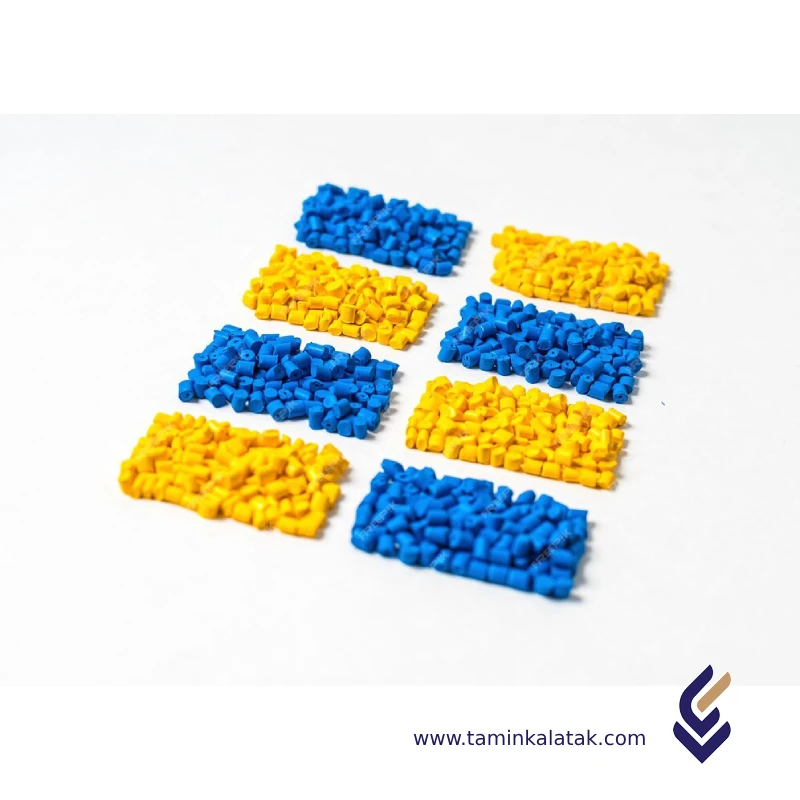
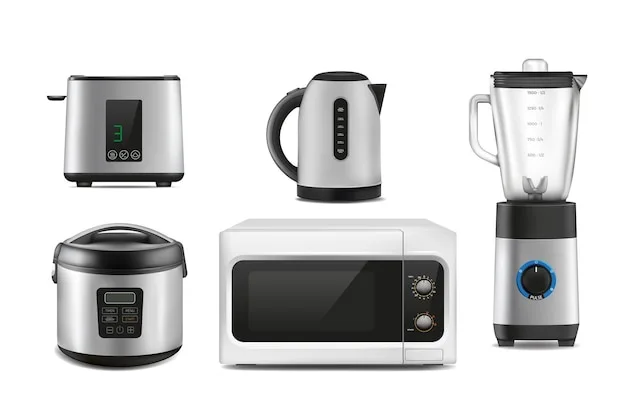
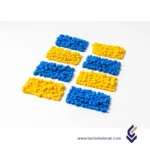

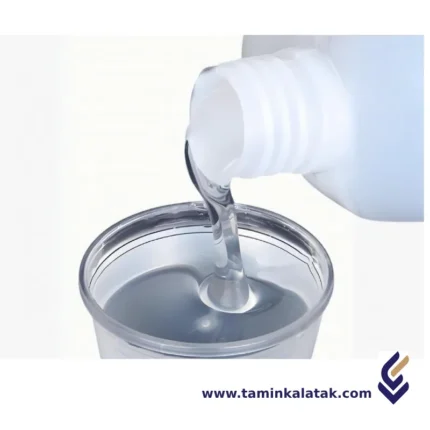
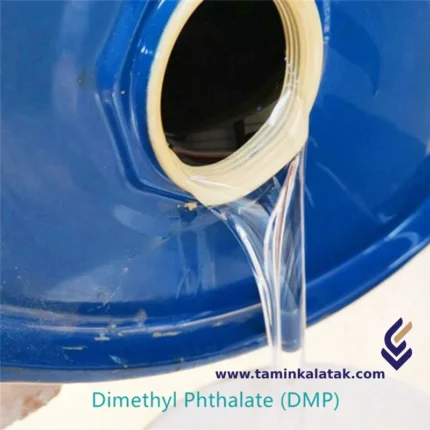
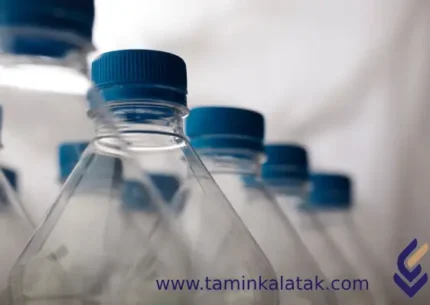

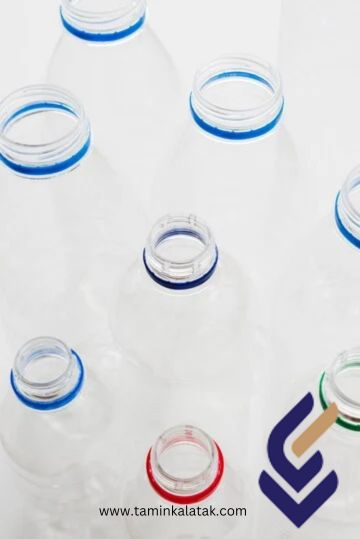
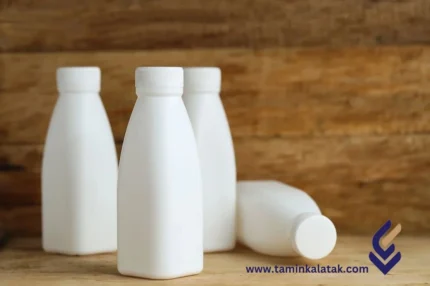
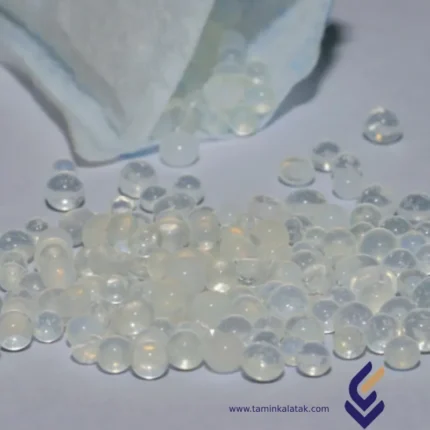
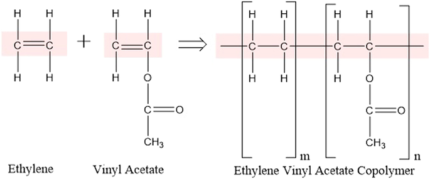
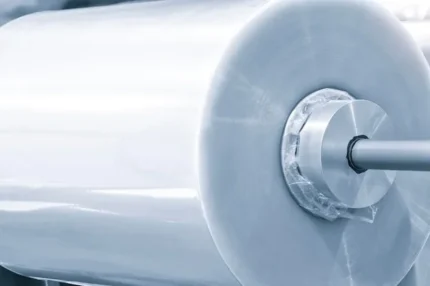
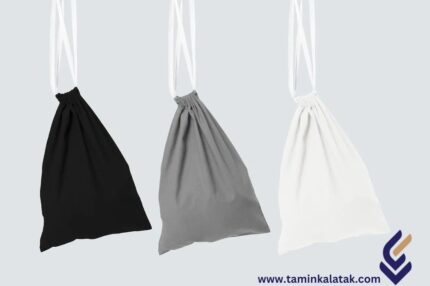
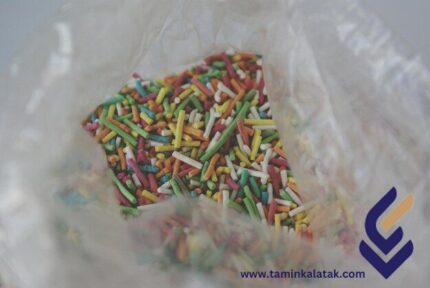

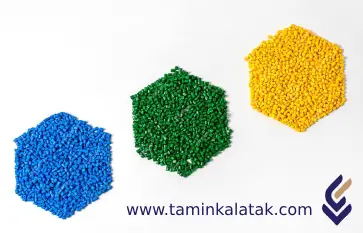
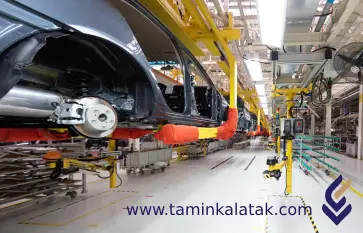


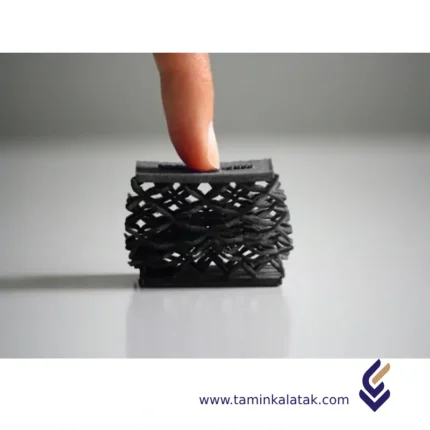
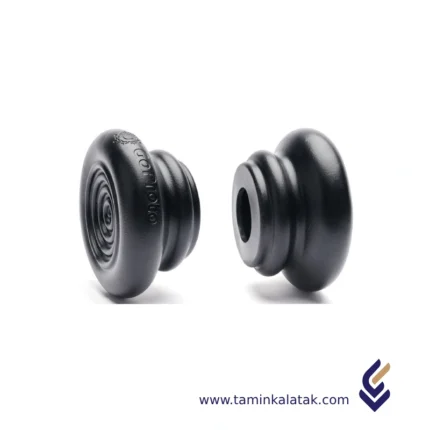






Reviews
There are no reviews yet.